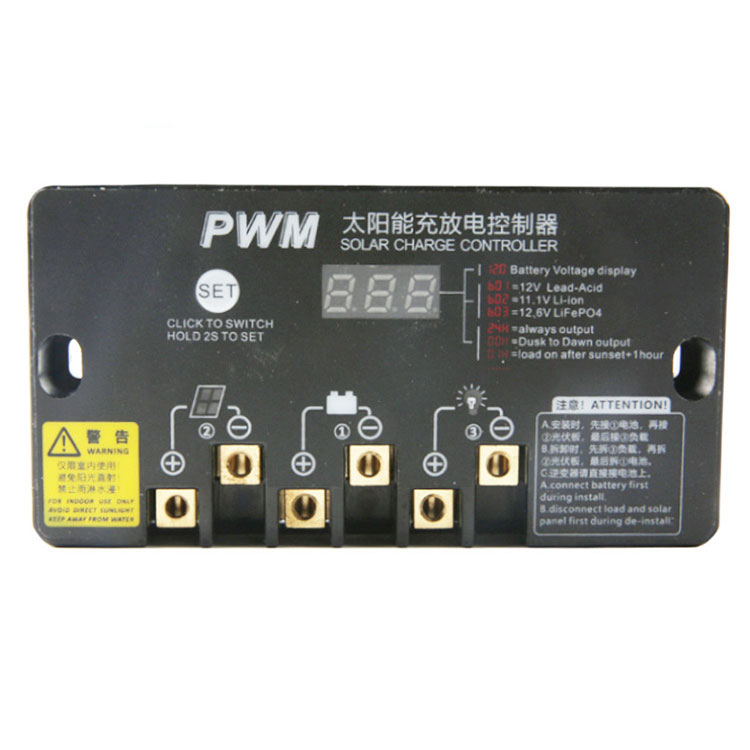Key functions and features of a solar controller
2023-10-17
A solar controller, also known as a solar charge controller or solar regulator, is an essential component of a solar power system that regulates the charging and discharging of batteries in off-grid and hybrid solar energy systems. Its primary function is to manage the flow of electrical energy between the solar panels, the batteries, and loads (appliances and devices) to ensure efficient charging, prevent overcharging, and extend the lifespan of the batteries. Solar controllers are a critical part of off-grid solar systems, RV solar systems, and other applications where energy storage is involved.
Here are the key functions and features of a solar controller:
1. Battery Charging: Solar controllers manage the charging process of batteries connected to the solar power system. They regulate the voltage and current supplied to the batteries to prevent overcharging, which can damage the batteries. They also ensure that the batteries receive the correct charging voltage based on their state of charge.
2. Load Control: Many solar controllers have load terminals that can be used to connect DC loads (such as lights and appliances) directly to the controller. The controller can turn these loads on and off based on user settings and the state of charge of the batteries. This feature helps prevent deep discharge of the batteries, which can reduce their lifespan.
3. Maximum Power Point Tracking (MPPT): Some advanced solar controllers, known as MPPT controllers, are designed to maximize the efficiency of the solar panels by adjusting the voltage and current they receive to find the maximum power point for harvesting energy. MPPT controllers are particularly useful when the solar panel's output voltage does not match the battery voltage.
4. Temperature Compensation: Many solar controllers include temperature sensors to monitor the battery temperature. They adjust the charging voltage based on temperature fluctuations to ensure optimal charging and protect the batteries from temperature-related damage.
5. Protection Features: Solar controllers often include protection features like overcurrent protection, short-circuit protection, reverse polarity protection, and overvoltage protection to safeguard the system and connected components.
6. Status Display: Solar controllers typically have an LCD screen or LED indicators that provide information about the system's performance, battery voltage, charging status, and error codes for easy monitoring and troubleshooting.
7. Data Logging: Some controllers offer data logging capabilities, allowing users to track system performance and energy production over time.
Solar controllers come in various types, including:
- PWM (Pulse Width Modulation) Controllers: These controllers regulate the voltage by rapidly switching the connection between the solar panels and the batteries on and off. PWM controllers are suitable for small to medium-sized solar systems.
- MPPT (Maximum Power Point Tracking) Controllers: MPPT controllers are more advanced and can extract more energy from the solar panels by optimizing the power transfer. They are often used in larger and more efficient solar systems.
Solar controllers are crucial for ensuring the reliability and efficiency of off-grid and hybrid solar power systems. Selecting the right controller depends on factors such as the size of the solar array, battery capacity, and the specific requirements of the application. Proper sizing and installation of a solar controller are essential for maximizing the performance and lifespan of the solar power system.



